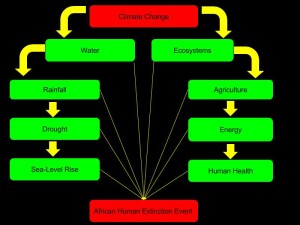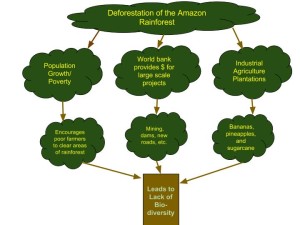Current Events:
United Nations Environment Program releases cautionary fact sheet on climate change
From news story released April 21, 2016
Climate: Africa’s Human Existence Is at Severe Risk
http://www.globalissues.org/news/2016/04/21/22047
In current news today, the United Nations Environment Program (UNEP) released a statement describing the peril that climate change might cause on the continent of Africa. UNEP announced that the African continent is the most severely affected continent when it comes to the effects of climate change, due to its poor development, natural deficiencies, and rapid climate change. T
The article describes several aspects of the biosphere that would be in danger of creating loss of biodiversity, including human life. Water is a big part of the climate change affects. Climate change affects rainfall which could affect droughts as well as flooding in various parts of Africa. These phenomenon could put drinking water strains on a population that already has a population that is under-nourished. Sea-level changes have also been noted and if they continue could affect coastal areas with large populations and endanger their lives.
According to the fact sheet produced ecosystems are critical in Africa, “contributing significantly to biodiversity and human well-being. Between 25 and 40% of mammal species in national parks in sub-Saharan Africa will become endangered.” This loss of biodiversity could adversely affect the human population by reducing resources and putting a strains on population survival.
The World Bank reported that by 2030 nearly 90million people in African will be exposed to malaria. If this disease or other diseases is combined with the phenomenon above, the African people face imminent danger.
System Diagram
The System Diagram above describes the hypothesized African Human Extinction Event. The source of such an event, is described in detail by the United Nations Environment Programme (UNEP.) UNEP predicts that current levels of climate change are affecting the African continent the most of any continent and that the African population is the most endangered human population due to climate change.
The Diagram shows climate change as the main source topic at the top. The red boxes above show the main topics, or how we get from A to B. The green boxes are the adversely affected areas of the biosphere, that could lead to a human extinction event on the continent of Africa. The arrows are in yellow to describe caution, as all of the effects shown here, happen to have negative effects.



